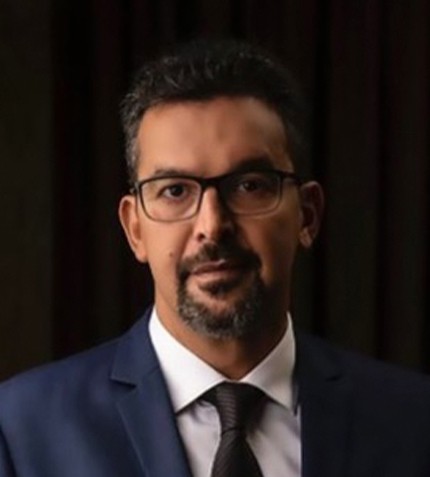
"A more holistic understanding of the deposit geology, geochemistry, geometallurgy, rock mechanics and the ecosystem in which it resides is required to develop a mine in an "optimal" manner, such that it minimizes impact on the environment and generates value for all stakeholders, including beyond the life of the mine."
Louise Pearce
GLOBAL MINING DIRECTOR, ERM
As ERM celebrates its 50th anniversary, what have been some of its key highlights?
ERM’s purpose is to shape a sustainable future with the world’s leading organizations. In pursuit of this purpose, we draw on five decades of environmental, health & safety, and sustainability experience to partner with our clients to help them define goals and translate them into action. We call this capability our “boots to boardroom” approach and this allows ERM to develop strategic and technical solutions that advance objectives on the ground or at the executive level. In our 50th year, we are building on this expertise and experience to deliver innovative solutions to address the planetary and systemic challenges of our time. This is also why ERM created the SustainAbility Institute to define and accelerate sustainability performance through action.
How does your mining sector work compare to that in other industries for ERM moving forward?
The sector is positioning itself to address increasing demand from increased urbanization and population growth, along with the crucial contribution of materials needed for the low carbon economy transition. The mining industry needs to strike a new balance as a crucial sector for a sustainable future, with a past often characterized by environmental and social transgressions. We are uniquely positioned to help mining and metals companies on their environmental, social and governance (ESG) and net zero journeys. Our platform enables us to attract the talent needed to work on these challenges and we are enhancing this through acquisitions of sustainability, low carbon transition and renewable energy consultancies, such as Stratos, RCG, E4tech, and Element Energy.
What is your view on electrification and the green revolution transition economy?
Net zero initiatives are ideal because they balance carbon emissions against removals and focus on overall greenhouse gas reductions. Knowledge and understanding of how to translate such high-level goals into practical roadmaps and plans is still sparse. We see five essential steps that are key to this journey: understanding your footprint, knowing your end goal, using less energy to result in less carbon, choosing low carbon power sources and removing remaining carbon. For this to work, the primary focus of net zero needs to be on greenhouse gas (GHG) reductions - electrification plays a key role. Offsets and carbon credits cannot be justified as a sole solution as this can enable increased emissions which is counterproductive. However, offsets will have a role to play in areas where significant carbon reductions cannot be achieved due to the hard to abate nature of certain industries where technology is not yet at a scale to provide alternatives (e.g. steel). Many mining companies have committed to net zero by 2050 or before—and are working hard to evaluate how to reduce carbon and incorporate their production’s contribution to the balance—in consideration of broader societal impact, biodiversity and water.
To what extent are renewables and carbon sequestration a feasible solution?
It is clear that carbon sequestration will play a role, but it is further down the hierarchy compared to alternative fuels, particularly the use of hydrogen. Sequestration techniques are already developed and applied such as in the oil and gas industry. As leading miners shift thinking from being landowners to land stewards in an interconnected society for a longer term, this is generating tremendous opportunity for sequestration and nature-based solutions. With renewables, some are confident that technology can solve the issue, yet others are skeptical and think more nuclear power will be needed. However, more than half of the world continues to rely on coal for power generation. The shift away from coal power requires an understanding of the complex and interconnected economy that forms the ecosystem of coal producing regions, their dynamic social make up, and the need for collaboration with governments and all industry towards a just transition.
How have demand trends for ERM’s services changed and evolved with the market?
We are seeing an increased demand for energy minerals like lithium, cobalt, nickel and PGMs, and the evidence that supports responsible sourcing of these materials. As mentioned above, another trend is transitioning beyond coal, which was in the headlines at COP26 — and we have seen many countries and companies joining the Power Past Coal Alliance. We have also noted increased demand for our technical disciplines centered around carbon strategies such as net zero pathways, circular thinking across the value chain, ore body knowledge, social performance and cultural heritage risk reviews. Biodiversity and the concept of “nature positive” is becoming a critical part of the conversation, as it is intrinsically linked to climate change and financial risk. This was also a key topic at COP26.
Can you highlight some of ERM’s achievements and success stories?
ERM works with clients all over the world, helping them to progress their ESG priorities and create innovative solutions to sustainability challenges. Some of our most recent achievements are focused on our work in decarbonization strategies and helping our clients plan for net zero. We are also working with a mining company in Canada undergoing mine expansion and helping them engage with their local communities. ERM’s virtual meeting room was custom built and is available in the primary Indigenous language and English. The virtual meeting room provided a safe, timely and convenient way to engage during a global pandemic to keep stakeholders informed and allows for a greater number of stakeholders to access the information. It also enabled our client to discuss important issues with local communities and ensure an open channel for consultation.
Can you elaborate on the approach to risk assessment for resource estimations changes?
The current mining business model relies on miners who advance projects based on resources and reserves, generally reported in terms of grade and tonnage. This includes routine economic, technical, legal, and environmental considerations. ESG factors, however, are likely to be an increasingly significant source of risk in metal and mineral supply over the coming decades. This will dictate a need for developing responsible and innovative ways to mitigate these ESG risks, e.g., mine smarter, mine less rock, utilize less water, introduce alternative mining technologies such as ISR (In-situ Recovery) – all of which can reduce the impact to the environment and broader society. Many of the critical decisions that shape the eventual ESG profile of the mine are often taken in the project's exploration and planning phase. A more holistic understanding of the deposit geology, geochemistry, geometallurgy, rock mechanics and the ecosystem in which it resides is required to develop a mine in an "optimal" manner, such that it minimizes impact on the environment and generates value for all stakeholders, including beyond the life of the mine.










